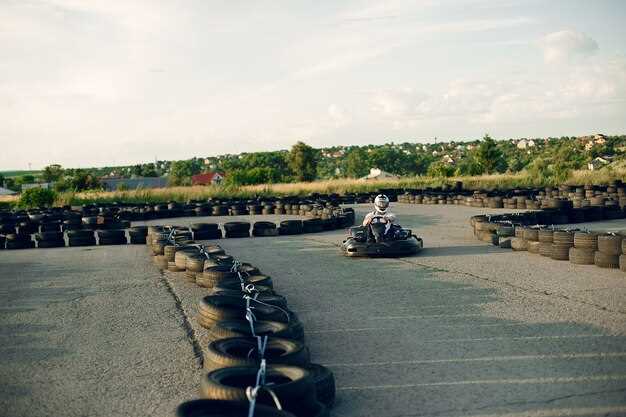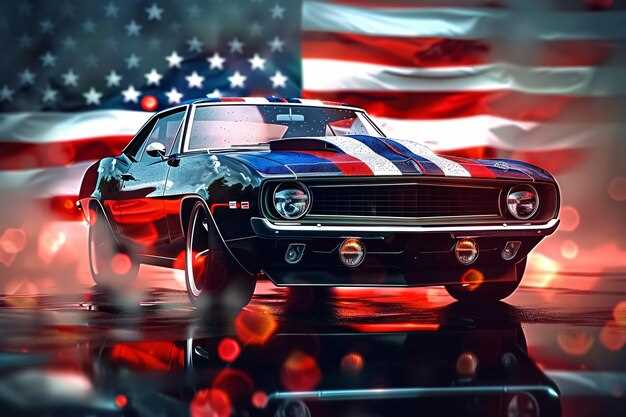
The landscape of motorsports in the United States is undergoing a significant transformation, driven largely by the grassroots movement that is rapidly gaining traction among amateur racers and enthusiasts. This growth is not merely a trend; it represents a fundamental shift in how motorsports are perceived and experienced at the local level. With more individuals participating in competitive racing events, the sense of community and passion for the sport has never been stronger.
As amateur racers take to the tracks, they bring with them a dedication that is often fueled by personal ambition rather than professional aspirations. This shift towards grassroots involvement allows participants to create their own unique racing experiences, fostering an environment where innovation and creativity flourish. The affordability of entry-level motorsport events has also contributed to this surge, making it accessible for a wider audience.
Moreover, the rise of social media and online forums has facilitated connections among enthusiasts, providing them with platforms to share their stories, tips, and successes. This community-driven approach not only enhances the experience for those involved but also attracts new followers to the world of motorsports, further solidifying its growth. As more amateur racers step into the limelight, the vitality of grassroots motorsports in the US continues to expand, promising an exciting future for enthusiasts and spectators alike.
The Rise of Local Racing Events and Their Impact on Communities
The growth of grassroots motorsports has sparked a resurgence of local racing events across the United States. These events not only provide a platform for amateur racers but also foster a sense of community among participants and spectators. Local racing brings together diverse groups of people, from seasoned enthusiasts to families seeking a fun day out, creating a vibrant atmosphere that strengthens community bonds.
Communities have begun to recognize the economic impact of hosting such events. Local businesses, such as restaurants, hotels, and shops, benefit significantly from increased foot traffic and sales on race days. This influx supports job creation and stimulates further investment in local infrastructure, enhancing overall community well-being.
Moreover, local racing events often promote inclusivity by encouraging participation from individuals of all ages and backgrounds. This accessibility not only broadens the base of motorsport enthusiasts but also inspires the younger generation to explore careers in automotive engineering, mechanics, and other related fields. Consequently, the growth of local racing fosters educational initiatives and skill-building opportunities, which further enrich the community.
As local racing events continue to flourish, their positive effects become increasingly evident. From strengthening local economies to building relationships among residents, the rise of grassroots motorsports is more than just a trend–it’s a movement that highlights the importance of community engagement and support for local talent.
How to Get Started in Amateur Racing: A Step-by-Step Guide

Getting started in amateur racing can be an exciting journey. Whether you’re a car enthusiast looking to take your passion to the next level or simply seeking a new hobby, following these steps can help you enter the world of racing.
1. Research and Understand the Types of Racing
Begin by exploring the various disciplines within amateur racing. Options include autocross, track days, rallycross, and road racing. Each has its own set of rules, vehicles, and required skills. Understanding what interests you will guide your subsequent decisions.
2. Choose the Right Vehicle
Your vehicle choice will depend on the type of racing you wish to pursue. For autocross, a small, nimble car works well, while road racing might require more power and handling capability. Research popular models in your category and consider buying a used vehicle to minimize costs.
3. Join a Local Racing Club
Connect with local amateur racing clubs to gain insights and access resources. These clubs often provide training, organized events, and a community of experienced racers who can offer advice. Look for clubs affiliated with national or regional racing organizations for credibility.
4. Attend Driver Training Courses
Before hitting the track, consider enrolling in a driving school or attending a performance driving course. These programs teach essential skills, including vehicle dynamics, cornering techniques, and safety protocols. Learning from professional instructors is invaluable for improving your racing capabilities.
5. Get Your Gear
Invest in essential safety gear, including a helmet, racing suit, gloves, and shoes. It’s crucial that your equipment meets safety standards set by the racing organization you plan to participate in. Proper gear not only keeps you safe but also enhances your performance.
6. Participate in Practice Events
Once you’re ready, sign up for practice events or novice days. These sessions allow you to refine your skills and familiarize yourself with the racing environment. Use this time to gain experience and test your vehicle’s performance.
7. Register for Races
After comfortable practice sessions, take the plunge and register for your first official race. Ensure that you meet all registration requirements and understand the race’s rules and regulations. Don’t worry about winning; focus on having a fun and learning experience.
8. Reflect and Improve
After each race, take time to reflect on your performance. Analyze areas for improvement, whether it’s driving technique, vehicle setup, or race strategy. Engage with fellow racers to share insights and tips–continuous learning is key to success in amateur racing.
By following these steps, you’ll be well on your way to enjoying the thrill of amateur racing. Remember, persistence and passion are vital, so stay committed to your racing journey.
The Role of Social Media in Boosting Grassroots Racing Interest

Social media has revolutionized how amateur racing enthusiasts connect, share, and grow their passion for motorsports. Platforms like Instagram, Twitter, and Facebook provide a space for racers to showcase their skills, share experiences, and build communities centered around grassroots racing.
These platforms enable amateur drivers to share their racing journeys, from the struggles of modifying their vehicles to the exhilaration of crossing the finish line. Video content plays a crucial role, with users uploading race highlights, tutorials, and behind-the-scenes footage that inspire others to join the sport.
Additionally, social media facilitates collaboration among enthusiasts. Racers can easily find local events, connect with teams, and engage with sponsors. This networking fosters a sense of belonging and motivates newcomers to participate. Online communities often organize meet-ups and events, enhancing local grassroots racing visibility.
Influencers within the motorsport community also amplify grassroots racing interest. By sharing their own amateur racing experiences, they inspire their followers to consider participation. Hashtags such as #GrassrootsRacing and #AmateurMotorsports help spread awareness and generate excitement, thus attracting more participants and spectators.
Moreover, social media serves as a platform for education. From technical advice on car modifications to racing safety tips, experienced racers often share valuable insights that can help beginners improve their skills. This shared knowledge contributes to a more informed and confident racing community.
In summary, social media’s role in boosting grassroots racing interest cannot be overstated. It not only connects individuals and communities but also educates and motivates. As more amateur racers embrace these platforms, grassroots motorsports will continue to flourish across the United States.
